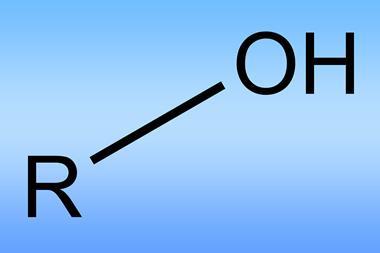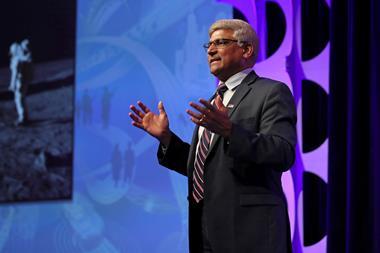Using time-resolved x-ray spectroscopy, researchers have directly observed the metal–alkane charge-transfer interactions that occur during C–H activation. The method offers synthetic chemists a better understanding of C–H activation reactions and could help guide the design of new catalysts.
The project, led by Raphael Jay and his team at Uppsala University, Sweden, set out to experimentally evaluate metal–ligand charge-transfer reactions during C–H activation by metal complexes.1
They carried out two ‘pump–probe’ experiments at the Paul Scherrer Institute in Switzerland using the Swiss Free Electron Laser facility (SwissFEL) and the Swiss Light Source synchrotron to track σ-complex formation and oxidative addition using a cyclopentadienyl rhodium carbonyl complex immersed in a dense octane solution.
‘We carried out time-resolved experiments using very short light pulses. The first light pulse was from an optical laser – a UV ultraviolet pulse that triggers the reaction,’ explains Jay. ‘Then we used a second pulse – a very short x-ray pulse, to measure the reaction. So, we know the time zero of the reaction, and then we can go through different time steps and measure from femtoseconds in the beginning all the way to nanoseconds, where the reaction then comes to an end.’
![]()
Ambar Banerjee , who works alongside Jay at Uppsala, says the advantage of using this technique was that they were able to specifically look at the interactions from a ‘metal perspective’.
‘At the site of the reaction you can dissect the different modes of electron transfer,’ he says. ‘So, there is a C–H bond to a metal charge transfer, and then there is a back donation from the metal to the C–H bond.’
‘We can basically dissect these two opposing charge transfers and look at the finer details where the reaction is actually happening; where the C–H bond is getting cleaved.’
Christina White , an organic chemist based at University of Illinois, US, says that the findings shed ‘important light on the metal ligand’s influence on crucial mechanistic steps governing reactivity’ and could help researchers discover better catalysts for the chemical industry.
‘Since the report by Milton Smith in 1999 that these types of cyclopentadienyl–late-transition metal complexes can catalytically borylate aliphatic C–H bonds2, there has been tremendous excitement about the potential synthetic utility of these systems,’ she adds.
Banerjee says more work is needed to systematically evaluate the role of these effects in C–H activation. ‘That will be really useful for synthetic chemists in knowing what fine tunings they need to incorporate in the spectator ligand structures so that a desired reactivity is observed,’ he adds.
References
1. R Jay et al. Science, 2023, DOI: 10.1126/science.adf8042
2. C N Iverson, M R Smith, J Am Chem Soc., 1999, DOI: 10.1021/ja991258w

















No comments yet